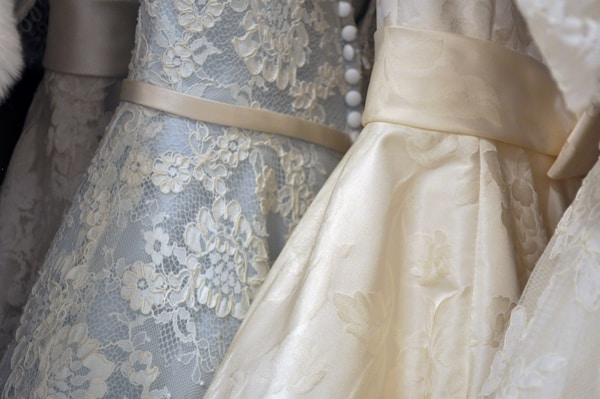Creating the Perfect Wedding Dress for Transitional Settings: From Indoor Elegance to Outdoor Charm
Planning a wedding involves myriad details, and one of the most critical elements is the wedding dress. Couples often ponder, “How do you design a wedding dress that transitions well from an indoor to an outdoor setting?” This question is vital as it reflects on the practicality and aesthetic of the wedding garment. A gown that fits beautifully in a grand indoor venue may struggle to impress in an open garden or on a beach, where elements like wind, sunlight, and even terrain come into play. In this article, we will explore essential design features, materials, and styling tips to create a stunning and versatile wedding dress that seamlessly transitions between indoor elegance and outdoor charm.
Understanding the Basics of Wedding Dress Design
When designing a wedding dress meant for both indoor and outdoor settings, it’s crucial to grasp the fundamental elements that contribute to dress functionality and style. Here are key aspects:
| Design Element | Description |
| Fabric Choice | Lightweight fabrics like chiffon and organza work well in outdoor settings, while satin and taffeta add elegance indoors. |
| Silhouette | A-line and sheath dresses are versatile enough for both settings, offering comfort without sacrificing style. |
| Length | Midi or tea-length dresses can provide a more relaxed look for outdoor settings, while full-length gowns remain classic indoors. |
| Accessories | Removable elements like jackets or capes can transform the look from indoor sophistication to outdoor ease. |
Fabric Selection: A Key Consideration
The choice of fabric plays a significant role in how well a wedding dress can transition between different settings. Consider lightweight materials for outdoor venues—these fabrics allow for airflow and movement. Chiffon, for instance, offers a soft, romantic drape that is perfect for a breezy outdoor ceremony. Conversely, consider fabrics like satin or silk for indoor environments, as they exude a luxurious appearance that can elevate a formal wedding.
One way to balance these requirements is by choosing a layered fabric design. This could mean a dress that is partly made of chiffon for outdoor ease, but lined with satin for added elegance when inside. The blend of materials can also enhance visual interest, making the gown dynamic in various light settings.
Choosing the Right Silhouette
Silhouette selection is another essential component of designing a wedding dress that can transition effectively. For brides who want the best of both worlds, A-line and sheath silhouettes are fantastic choices. An A-line dress flatters nearly every body shape and embodies both versatility and elegance, making it suitable for both lush gardens and formal ballrooms.
Sheath dresses, which follow the body's natural lines, can be paired with a gorgeous train for indoor elegance, and then easily adjusted for outdoor comfort by creating removable train options or shorter styles. Working with a knowledgeable designer can provide insight into how different silhouettes respond to varying environments, ultimately guiding your choice.
The Length Dilemma: Finding the Balance
The length of a wedding dress can greatly impact its adaptability. Full-length gowns evoke traditional elegance, especially in formal indoor settings. However, they can be cumbersome in outdoor environments, especially on uneven ground. Options such as midi or tea-length dresses provide a delightful middle ground—offering sophisticated looks without the heaviness of a long gown.
Consider constructing a versatile dress with adjustable lengths. Adding a detachable skirt or removable overlays allows you to adapt the dress to your preferences and location. This can be a fantastic way to keep comfort in mind while still looking stunning.
Accessorizing for Versatility
Accessories can make or break a wedding dress's ability to transition gracefully from one setting to another. Consider elements that can be added or removed easily based on your location. For example, a detachable train can enhance the look for indoor receptions while facilitating movement during outdoor ceremonies.
Another viable option is the use of capes or jackets that match your dress. These can provide warmth and elegance indoors and can be easily removed for a more relaxed outdoor reception. The right accessories allow brides to transform their look effortlessly, making them feel comfortable no matter the setting.

Planning for Elemental Challenges
Outdoor weddings come with unique considerations, especially concerning weather. For warmer climates, think breathable fabrics that won’t cling to the body. In contrast, for cooler locations, consider layering options like shawls or pashminas that can be easily integrated into your look.
Moreover, if you’re heading to a windy location, consider how a dress's design can hold up against the breeze. Choosing styles that are less likely to fly up or move excessively will ensure that you maintain an elegant look throughout the day.
Focusing on Bridal Comfort
Ultimately, the most important aspect of any wedding dress is comfort. The bride should feel free to move, dance, and celebrate without restrictions. Conducting fabric tests, walking trials, and practicing movements can help ensure the chosen gown allows for comfort in both settings. Remember, a happy bride is a beautiful bride!
Conclusion: Designing the Transitional Wedding Dress
Ultimately, the journey to creating the perfect wedding dress that transitions from indoor to outdoor settings revolves around careful consideration of materials, design features, comfort, and accessorizing. Whether you opt for an A-line skirt, a sheath silhouette, or a playful tea-length dress, it’s essential to keep the experience of wearability and visual appeal in mind. Think through accessories like capes, detachable trains, and suitable fabrics. Plan for the elements and ensure that comfort remains at the forefront;
Every bride deserves to have a dress that reflects her style while being versatile enough for her dream wedding. Remember, a well-designed dress allows you to focus on celebrating love rather than worrying about your gown. With these tips, we hope you feel inspired to say "Yes!" to a wedding dress that embodies the spirit of both indoor elegance and outdoor bliss.